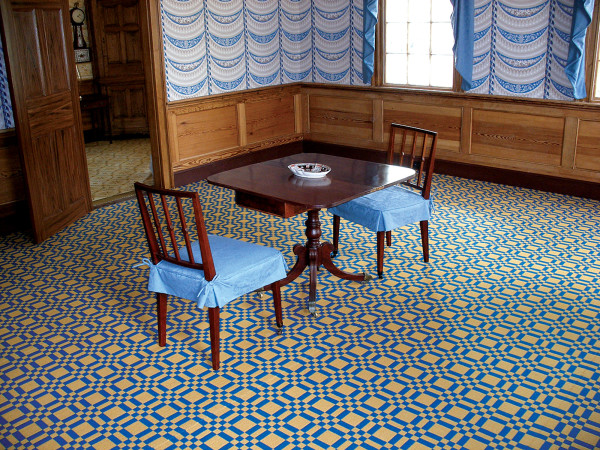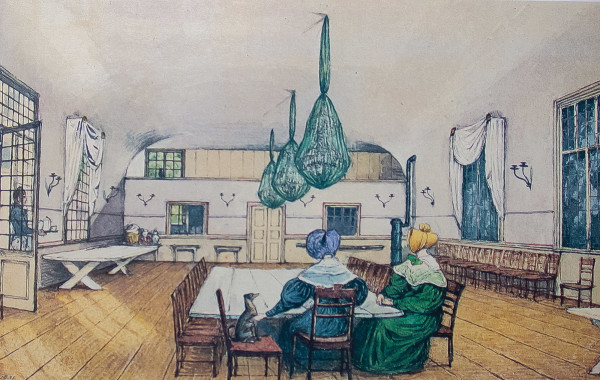Provincetown artist John Dowd remarked that he’d covered a chaise in a plaid blanket for its “winter dress.” (See 1820 Cottage in Provincetown, Massachusetts.) During the cold season, wool tartans cover beds in his home, adding visual warmth as well as creature comfort. His unstudied practice is actually a throwback to seasonal decorating—once common practice in early houses without window screens and central heat or air conditioning.

Simple seat covers tie on to add summer color and protect upholstery in a Georgia house museum.
Courtesy Thistle Hill Weavers
The most familiar summer change is the use of SLIPCOVERS—lighter weight, often light-colored, washable coverups for upholstered furniture. Not only do slipcovers protect furniture against sunlight and sweat, but they also dramatically change the room. If you also take up a heavy rug and swap out a few decorative objects, you can have an entirely different look, summer and winter. Traditional materials for slipcovers include cotton and linen blends, cambric, muslin, twill, and cotton duck.
BUG BARS Also called mosquito bars (in the sense of “barriers”), these are simply open-weave or lightweight fabrics used to wrap or cover chandeliers and picture frames. Insects leave hard-to-remove “specks,” especially on crystal and gilding.

For protection against bugs coming through open windows, chandeliers were wrapped in lightweight fabric to prevent fly specks. Note the summer window dressings. The 19th-century painting is by Mary Ellen Best.
Courtesy Crown Publishing
GRASS MATTING Just as slipcovers brighten a room and give it a summer makeover, straw matting once lightened the floor and made it feel more like summertime inside. Grass matting might be colored, woven with designs, or made of small squares sew together. But, like carpet, it was a wall-to-wall installation. The matting might be laid on top of wool carpet in spring and summer—or used beneath the wool carpet as a pad in fall and winter. In the latter case, the wool carpet would be taken up in spring, cleaned, and rolled for storage; the cooler mat remained to protect the floor and keep down dirt and dust.
Captured on canvas
In hot weather, a cotton slipcover felt better against the skin than wool, horsehair, or silk. Best of all, slipcovers were washable. The watercolor paintings of Mary Ellen Best recorded family and friends socializing in comfort on slipcovered furniture, in both modest and high-style houses. Paintings of English and American interiors depict decorative summer coverings used on easy chairs, side chairs, sofas, and daybeds.
Information adapted from “Bug Bars and Slipcovers” by Rabbit Goody and Jill Maney, Early Homes magazine archive.







